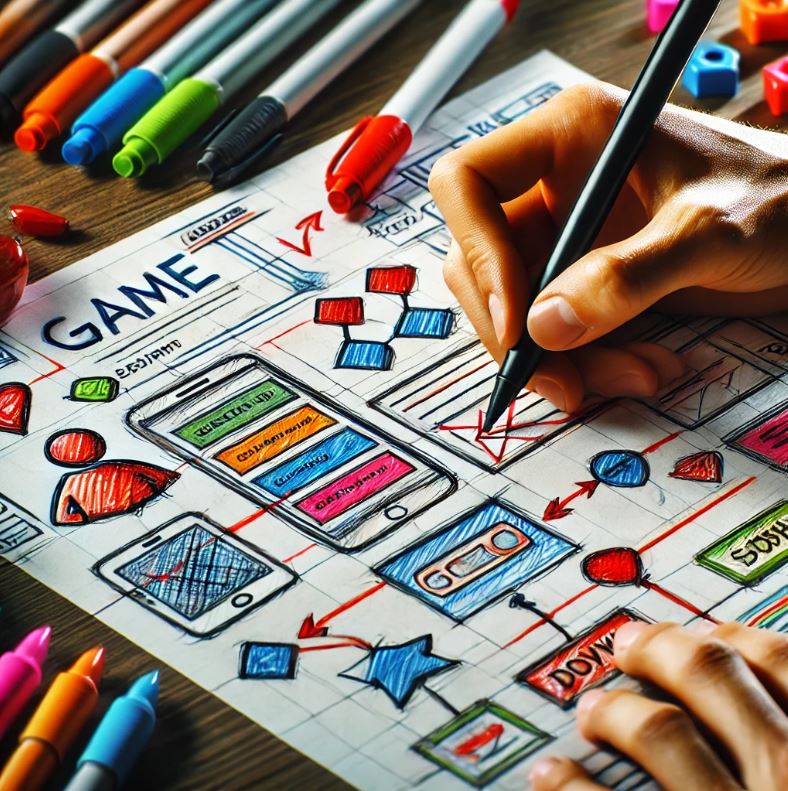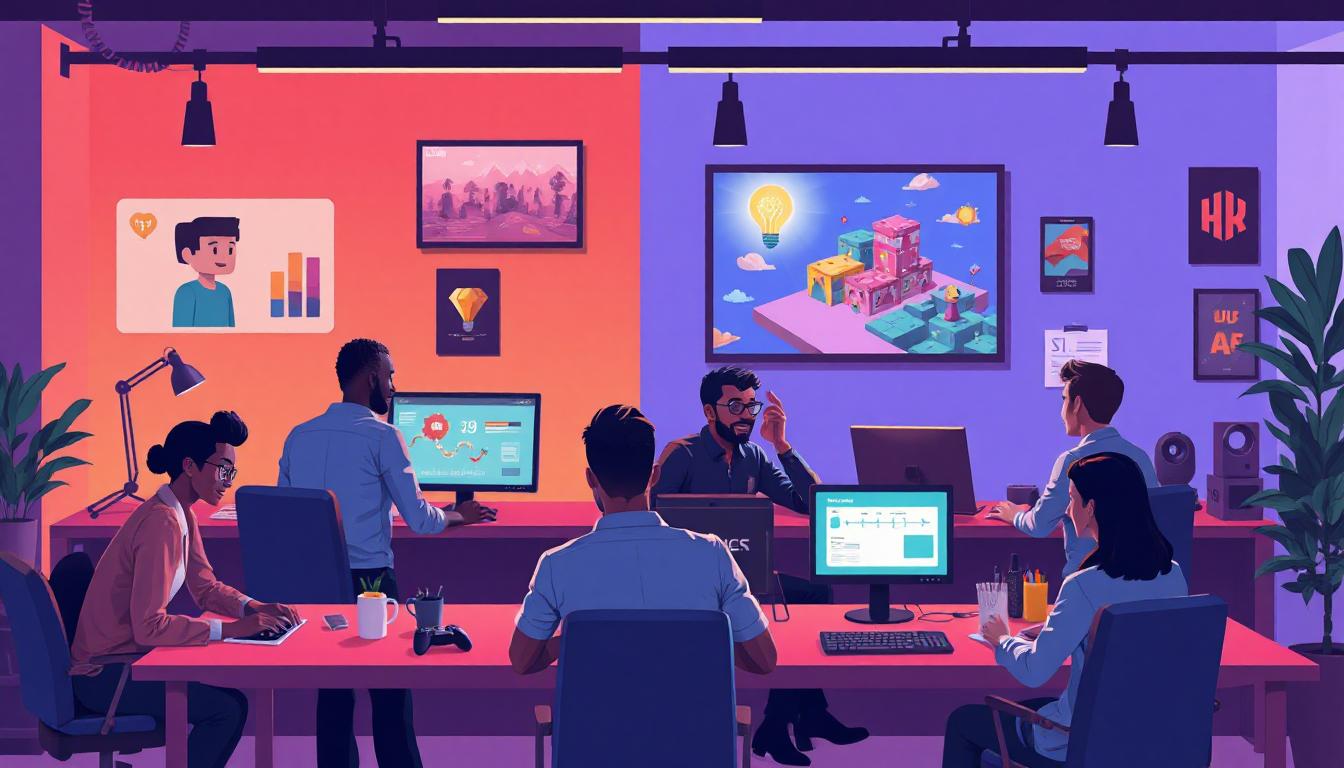
How to generate a Game Prototype (Step by Step)
Creating a game prototype is an essential step in game design. It allows developers to turn their ideas into a tangible form, test key mechanics, and refine their designs based on player feedback. This article combines insights from six respected academic and institutional sources to provide a clear, step-by-step guide to game prototyping, as well as an overview of the methodologies and principles discussed in these references.
Introduction to Game Prototyping
Game prototyping involves creating an early version of a game to test its features, mechanics, and overall viability. According to Plymouth State University’s article, “The Design Process: Prototyping,” this process allows developers to spot potential problems early on, which can minimize the chances of expensive errors later in development. Research from the International Game Developers Association (IGDA) indicates that early prototyping can lower development costs by as much as 30%.
Step 1: Defining Core Concepts
The University of Michigan’s guide on “How to Prototype a Game” emphasizes the need to clearly define a game’s core concepts before starting development. Developers should consider important questions such as: What is the primary gameplay loop? Who is the target audience? What emotions do we want the game to evoke? By addressing these questions during the initial brainstorming phase, the game prototype can focus on testing the most essential elements of the game.
Celeste is a great example of focused game development. The team started by perfecting the basic jumping and movement controls before adding other features. This approach helped create a highly successful game that players loved.
Similarly, WPI teaches students to write down their game ideas and find what makes them special before starting development. Studies show that 8 out of 10 successful indie games succeed by mastering one main game feature in their early versions.
Step 2: Choosing the Right Type of Game Prototype
Choosing the right way to prototype is crucial. The Massachusetts Institute of Technology (MIT) OpenCourseWare’s lecture on paper prototyping shows that it is both easy and adaptable. Studies from USC’s Game Prototyping Lab found that using paper prototypes can cut early design time in half because designers can test ideas quickly without needing complex technology.
For example, Hearthstone‘s early development used actual cards to check if the game was balanced and worked well. This cheap method allowed quick testing and helped shape the final computer game.
On the other hand, the New York Film Academy (NYFA) discusses digital prototyping, particularly for testing complex interactions. A case study on The Sims shows how early digital prototypes were used to simulate player interactions and test emergent gameplay possibilities, leading to its groundbreaking success.

Step 3: Building the Game Prototype
Making a game prototype means turning ideas into something you can actually test. According to Taylor University’s “Iterative Design and Playtesting,” first, you need to figure out the most basic version of your game that still works (MVP) and focus on the main ways players will interact with it. Developers should start with simple working versions that focus on how the game plays rather than how it looks. IGDA reports that when early versions focus on gameplay, players are 25% more likely to keep playing.
According to the WPI guide, it’s best to build your game in separate pieces that work together, so you can test each part on its own. Minecraft is a good example of this approach. By testing things like how players place blocks and collect resources separately, the creators made a game that became hugely popular.
Step 4: Playtesting and Feedback
Playtesting is crucial for understanding how players experience them. Plymouth State University’s article highlights the importance of observing players as they interact with the game prototype to learn what works and what doesn’t. Research from the Game User Research Summit shows that games tested multiple times during development are 40% more likely to succeed when released.
The popular game Portal shows how important testing can be. Its developers used extensive playtesting sessions to refine its core mechanic, the portal gun, making it easier to use and more fun. Taylor University’s guide emphasizes iterative playtesting, where game prototypes get tested multiple times, making small improvements each time, helping create better games. This step-by-step improvement process is key to making great games. You can read about playtesting in more detail in our previous article, The Role of Playtesting in Game Development.
Step 5: Refinement and Iteration
After getting player feedback, developers enter the improvement phase. According to NYFA, this involves looking at what players are saying to spot common issues and decide what to fix first. Case studies on Stardew Valley demonstrate how long-term iteration—spanning several years—can transform an initial concept into a commercial and critical hit. During its prototyping phase, feedback on mechanics like farming and social interactions led to continuous improvements that became key to its success.
MIT’s lecture recommends keeping track of player feedback and game data to guide their improvements. For example, League of Legends developers used maps showing where players spent their time and how they played to make better levels and characters, keeping the game fair and fun.
Games like Stardew Valley prove that steady updates over time can transform a simple concept into a hit game. Early feedback about farming and talking to characters helped make these features much better, which players really loved.
Step 6: Transitioning to Production
The final step in the prototyping process is moving from a game prototype to full-scale production. WPI’s guide advises developers to make a detailed roadmap that shows the steps needed to transform the game prototype into a complete game. This includes improving graphics, making the code run better, and adding more game features based on what you learned while prototyping.
Before production, Overwatch developers ran extensive stress tests and performance evaluations to make sure that it would work well with many players. Taylor University’s guide suggests having people play the game one last time before starting full production. This final testing can help catch any critical issues before committing to production. According to IGDA, this final phase can reduce the number of fixes needed after release by 20%.
Common Challenges in Game Prototyping
Despite its benefits, game prototyping is not without downsides. Plymouth State University highlights the tendency for developers to get too attached to one idea, making it hard to change direction when needed. The game Anthem shows what can go wrong when developers stick too firmly to their original plans, leading to problems with how the game played and kept players interested.
Another problem, as noted by NYFA, is handling what players expect during game playtesting. Developers need to make it clear that early versions aren’t finished games. Being open with players creates better teamwork, as shown by Subnautica, where player feedback during early access helped make the game better.

Conclusion
Game prototyping is a vital step in game design that helps developers test ideas, improve mechanics, and create engaging player experiences. The six sources we looked at in this article show clear steps for successful game prototyping, from defining core concepts (early planning) to transitioning into final production. These steps provide a structured approach that enables developers to bring their creative visions to life.
Using rapid iteration, flexible design, and focusing on player experience, game designers can handle the complexities of game prototyping with confidence. The inclusion of case studies and statistics further shows how good prototyping helps make better games, with each version getting closer to the final product.
Q&A
Why is game prototyping important in the development process?
It lets developers try out ideas and spot problems early on while building a game. It also helps them fine-tune how the game plays before spending too much time and money. The International Game Developers Association (IGDA) found that testing early versions can cut costs by up to 30% and make sure the game is fun and works well before moving forward with the full project.
What is the difference between paper game prototyping and digital game prototyping?
Paper prototypes are simple sketches or physical models used to test basic game ideas quickly and cheaply. They work best for early planning and making fast changes. Digital prototypes are playable computer versions of the game, better for testing complex features and showing how the final game might work. For instance, the card game Hearthstone started with paper prototypes, while The Sims used computer prototypes to test how players would interact with the game.
How can developers avoid getting too attached to one idea during game prototyping?
Game makers should stay open to new ideas and listen to what players say. Testing the game often with real players and making changes based on their feedback helps create better games. The game Anthem shows what can go wrong when developers stick too firmly to their first ideas. Testing early versions of a game should be a chance to try new things and be creative.
How does iterative playtesting improve game development?
Testing a game over and over with players helps make it better each time. After each test, developers make small changes based on what players say and do. This step-by-step improvement means each new version of the game gets better. Studies show games tested this way are much more likely to do well. The popular game Portal is a good example of how this testing method creates games that are fun and easy to play.
What are some examples of successful games that benefited from long-term game prototyping and iteration?
Many successful games improved through careful testing and changes. For example, Celeste became great by first ensuring that jumping and moving felt just right before adding other features. Stardew Valley also took years to develop, with the creator regularly improving farming and character interactions based on what players enjoyed. Both games became very popular because of this careful method.
References:
- Plymouth State University. “The Design Process: Prototyping.”
- University of Michigan. “How to Prototype a Game.”
- Massachusetts Institute of Technology (MIT) OpenCourseWare. “Class on Creating Video Games, Lecture 2, Paper Prototyping.”
- Taylor University. “Iterative Design and Playtesting.”
- Worcester Polytechnic Institute. “Step 1: Design.”
- New York Film Academy. “Getting The Most Out Of Your Video Game Prototype.”


